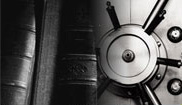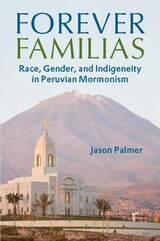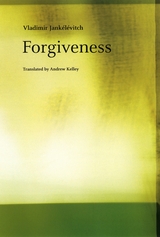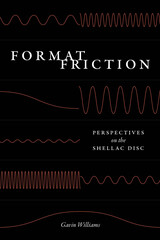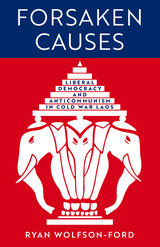18 start with S start with S
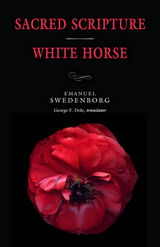
In Sacred Scripture, Swedenborg explains how the inner meaning of the Bible relates to its outer (literal) meaning, and he cites numerous biblical passages to show how similar themes emerge again and again. He describes two distinct layers of inner meaning—the heavenly and the spiritual—and shows how an understanding of that inner meaning strengthens a person’s connection with Deity and with heaven.
White Horse begins with a short summary of the spiritual meaning of the white horse described in Revelation 19:11. In form, what then follows is a series of statements about the inner meaning of the Bible with references to explanatory passages in Secrets of Heaven. However, when read in sequence, those statements are also a concise summary of Swedenborg’s theology of biblical interpretation.
The perspective provided by these two short works allows the reader to see through the Bible’s clouds of baffling, obscure, and seemingly inconsistent details to the power and unity of divine love and wisdom within the text. Students or seekers interested in Swedenborg’s teachings about the interrelationship between the spiritual world and the physical one will find this volume a helpful guide. Sacred Scripture / White Horse is part of the New Century Edition of the Works of Emanuel Swedenborg (NCE), an ongoing translation series. The NCE series incorporates the latest scholarship and translation standards for a more accurate and accessible rendering of Swedenborg’s works.
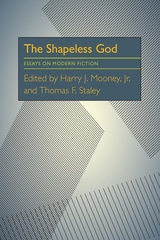
Nine noted literary critics examine the spiritual and religious elements in the fiction of such diverse writers as James Baldwin, J. F. Powers, Graham Greene, Par Lagerkvist, and Flannery O’Connor.
Contributors: Robert Boyle, S.J.; Robert McAfee Brown; A. A. Devitis; Herbert Howarth; Maralee Frampton; Nathan A. Scott, Jr.; Albert Sonnenfeld; Winston Weathers; and the editors

In their devotion to the well-being of others, caregivers routinely put their own well-being last and can unintentionally burn themselves out physically, emotionally, and spiritually. Their self-neglect, paired alongside a deep desire to help others, has the potential to stir up feelings of anger and resentment, leading to a sense of guilt and shame. They often believe that if they were to grant themselves any rest or grace, they would be at risk of failing in their duty.
In The Soul of the Helper, Dr. Holly K. Oxhandler shows caregivers and fellow helpers a more self-compassionate way to cope with their overwhelming responsibilities and to attend to their own needs, particularly when it comes to their mental health and spiritual journey. She invites them to pause and realize that if they let their personal resources run dry, they cannot possibly care for others as fully as they wish. In fact, their efforts are likely to cause more harm than good.
With a background in spiritually-integrated mental health, Dr. Oxhandler teaches helpers a seven-step process to slow down and reconnect with the stillness within themselves. It is in this space of stillness that Oxhandler guides helpers to reconnect with the “sacred spark” within their soul. By allowing themselves to enter that stillness, caregivers will recognize that they, too, are worthy of care. And with that realization, they will see anew the sacred spark that dwells inside everyone else, especially within those they’re helping.
As a social worker, researcher, and person of faith, Dr. Oxhandler writes in a warm and welcoming style, shares many relatable stories, and widens her scope to include believers of all faiths and spiritual traditions. Her book is for caregivers everywhere who sense the sacred spark within them saying, in effect: “Come to me, all you who are weary and burdened, and I will give you rest.”
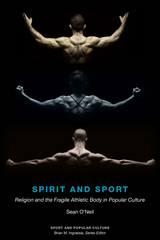
In Spirit and Sport: Religion and the Fragile Athletic Body in Popular Culture, Sean O’Neil studies the intersectionality of religion and disability as it exists within contemporary sports. To do so, he calls to the forefront various contemporary stories about trauma and disability—some fictional, others biographical—and examines how we tell and interpret these stories within the frameworks of athletic activity, competition, failure, and success. O’Neil studies a wide range of perspectives, from John Irving’s A Prayer for Owen Meany and the big-screen’s Signs to the experiences of real-life athletes like Tim Tebow, Muhammad Ali, and Bethany Hamilton. Woven throughout his examination of each is a consideration of religious belief and practice, especially within Christianity, as it relates to athletic ability—the lighthearted stories of victory and overcoming, the inspiring triumph over fragility and limitation so often couched in religious terms.
O’Neil’s study draws upon his experiences as a hospital chaplain and his own battle with skin cancer. By blending personal experience with sociological observation, O’Neil argues that the intersection of religion, sports, and disability in popular culture is a revealing site of cultural struggle over competing myths, identities, and values related to the body—both the physical bodies we inhabit as well as the broader social bodies to which we subscribe.
Spirit and Sport is a study with broad appeal: from O’Neil’s autoethnographic storytelling to the wide range of narrative media he examines, religious scholars, sports historians, and general audiences alike are sure to find it a thought-provoking and engaging read.
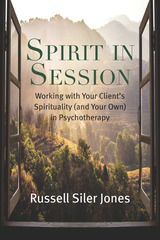
Spirituality is an important part of many clients’ lives. It can be a resource for stabilization, healing, and growth. It can also be the cause of struggle and even harm. More and more therapists—those who consider themselves spiritual and those who do not—recognize the value of addressing spirituality in therapy and increasing their skill for engaging it ethically and effectively.
In this immensely practical book, Russell Siler Jones helps therapists feel more competent and confident about having spiritual conversations with clients. With a refreshing, down-to-earth style, he describes how to recognize the diverse explicit and implicit ways spirituality can appear in psychotherapy, how to assess the impact spirituality is having on clients, how to make interventions to maximize its healthy impact and lessen its unhealthy impact, and how therapists can draw upon their own spirituality in ethical and skillful ways. He includes extended case studies and clinical dialogue so readers can hear how spirituality becomes part of case conceptualization and what spiritual conversation actually sounds like in psychotherapy.
Jones has been a therapist for nearly 30 years and has trained therapists in the use of spirituality for over a decade. He writes about a complex topic with an elegant simplicity and provides how-to advice in a way that encourages therapists to find their own way to apply it.
Spirit in Session is a pragmatic guide that therapists will turn to again and again as they engage their clients in one of the most meaningful and consequential dimensions of human experience.

Aaron T. Wolf has spent his career mediating such conflicts, both in the U.S. and around the world. He quickly learned that in negotiations, people are not automatons, programed to defend their positions, but are driven by a complicated set of dynamics—from how comfortable (or uncomfortable) the meeting room is to their deepest senses of self. What approach or system of understanding could possibly untangle all these complexities? Wolf’s answer may be surprising to Westerners who are accustomed to separating religion from science, rationality from spirituality.
Wolf draws lessons from a diversity of faith traditions to transform conflict. True listening, as practiced by Buddhist monks, as opposed to the “active listening” advocated by many mediators, can be the key to calming a colleague’s anger. Alignment with an energy beyond oneself, what Christians would call grace, can change self-righteousness into community concern. Shifting the discussion from one about interests to one about common values—both farmers and environmentalists share the value of love of place—can be the starting point for real dialogue.
As a scientist, Wolf engages religion not for the purpose of dogma but for the practical process of transformation. Whether atheist or fundamentalist, Muslim or Jewish, Quaker or Hindu, any reader involved in difficult dialogue will find concrete steps towards a meeting of souls.
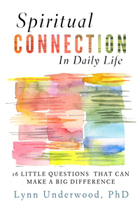
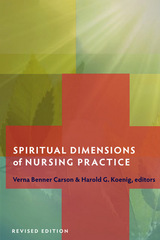
Ever since the first edition of Verna Benner Carson's Spiritual Dimensions of Nursing Practice went out of print, second-hand copies have been highly sought after by practitioners in the field and nursing school faculty who appreciated the comprehensive scope of the seminal work on spirituality and health. In this highly anticipated revised edition, Carson and her co-editor, Harold G. Koenig, have thoroughly revised and updated this classic in the field.
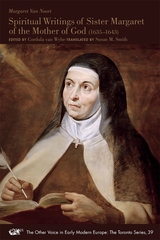
In 1635, as directed by her confessor so that he might understand “the state of her soul,” Margaret Van Noort, a lay sister of the royal convent of Discalced Carmelite nuns in Brussels, composed her spiritual autobiography. This text was followed by two diaries in 1636 and 1637 recording the workings of her inner life and relation to God, and reflecting the cosmopolitan Catholic tradition of her homeland. Now gathered in this volume, these works illustrate Margaret’s development from a troubled young lay sister into a woman of spiritual experience and authority.
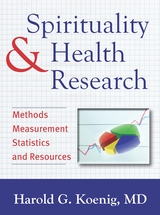
In Spirituality and Health Research: Methods, Measurement, Statistics, and Resources, Dr. Harold G. Koenig leads a comprehensive overview of this complex subject. Dr. Koenig is one of the world’s leading authorities on the relationship between spirituality and health, and a leading researcher on the topic. As such, he is distinctively qualified to author such a book.
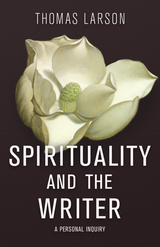
Today, the surprisingly elastic form of the memoir embraces subjects that include dying, illness, loss, relationships, and self-awareness. Writing to reveal the inner self—the pilgrimage into one’s spiritual and/or religious nature—is a primary calling. Contemporary memoirists are exploring this field with innovative storytelling, rigorous craft, and new styles of confessional authorship. Now, Thomas Larson brings his expertise as a critic, reader, and teacher to the boldly evolving and improvisatory world of spiritual literature.
In his book-length essay Spirituality and the Writer, Larson surveys the literary insights of authors old and new who have shaped religious autobiography and spiritual memoir—from Augustine to Thomas Merton, from Peter Matthiessen to Cheryl Strayed. He holds them to an exacting standard: they must render transcendent experience in the writing itself. Only when the writer’s craft prevails can the fleeting and profound personal truths of the spirit be captured. Like its predecessor, Larson’s The Memoir and the Memoirist,Spirituality and the Writer will find a home in writing classrooms and book groups, and be a resource for students, teachers, and writers who seek guidance with exploring their spiritual lives.
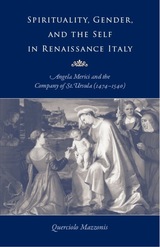
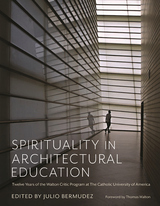

This book is intended as a guide for practicing physicians, medical students, and residents to help identify and address the spiritual needs of patients. Those who will benefit most will be physicians who wish to know how to integrate spirituality into clinical practice in an effective and sensitive manner. Other professionals, such as nurses and chaplains, may use this book as they interact with doctors, other health professionals, and hospital administrators.
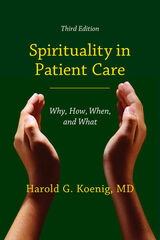
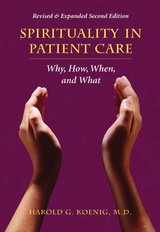
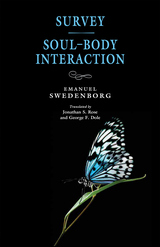
These two shorter works by Swedish theologian Emanuel Swedenborg (1688–1772), originally published separately and very different in content, both represent Swedenborg’s own effort to summarize complex areas of his thought.
Published toward the end of Swedenborg’s life, Survey of Teachings of the New Church was a forerunner to his final theological work, True Christianity. In Survey, Swedenborg discusses some key tenets of Christian doctrine, both Catholic and Protestant, and describes how his own theology differs from it. He focuses on key concepts such as the Trinity, the nature of faith and charity, and the spiritual nature of the Last Judgment described in the book of Revelation. Taken as a whole, the piece is a brief summation of the doctrines that Swedenborg felt were critical for the coming spiritual age.
Soul-Body Interaction addresses a crucial area of Swedenborg’s thought: the way that life flows from the transcendent God into all living things. Swedenborg describes the nature and structure of the spiritual world, including heaven, hell, and the intermediate world of spirits, and describes how the higher levels of being reflect a more perfect conjunction with God. He also traces the flow of the Lord’s love and wisdom into the soul of all living people, showing how it gives life regardless of their current spiritual state.
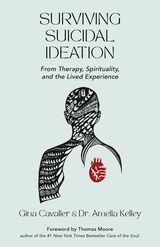
Surviving Suicidal Ideation embarks on a profound journey through the underlying causes, stages, and powerful emotions that shape the experience of having suicidal thoughts. More importantly, it provides proven tools, exercises, and steps to curtail and heal this preventable condition. With sensitivity and clarity, Dr. Amelia Kelley and Gina Cavalier explore the interconnectedness of addiction, mental health, and trauma.
Using a unique combination of analytic and spiritual practices, mindfulness, cutting-edge brain therapy, and compassionate support, this book offers therapies and self-help techniques with corresponding exercises; hand-inked illustrations by Cavalier; a foreword by Thomas Moore, New York Times bestselling author of Care of the Soul; and an extensive list of resources.
As a public speaker, Cavalier focuses on memoir-style storytelling about living with suicidal ideation. Together, the authors present holistic approaches to suicide prevention and debunk prevalent myths. They also go beyond individual healing, emphasizing the importance of community and relationships. Ultimately, Surviving Suicidal Ideation provides a nonjudgmental guide that enables the reader to develop self-compassion and work toward a positive future filled with hope and resilience.
READERS
Browse our collection.
PUBLISHERS
See BiblioVault's publisher services.
STUDENT SERVICES
Files for college accessibility offices.
UChicago Accessibility Resources
home | accessibility | search | about | contact us
BiblioVault ® 2001 - 2024
The University of Chicago Press
